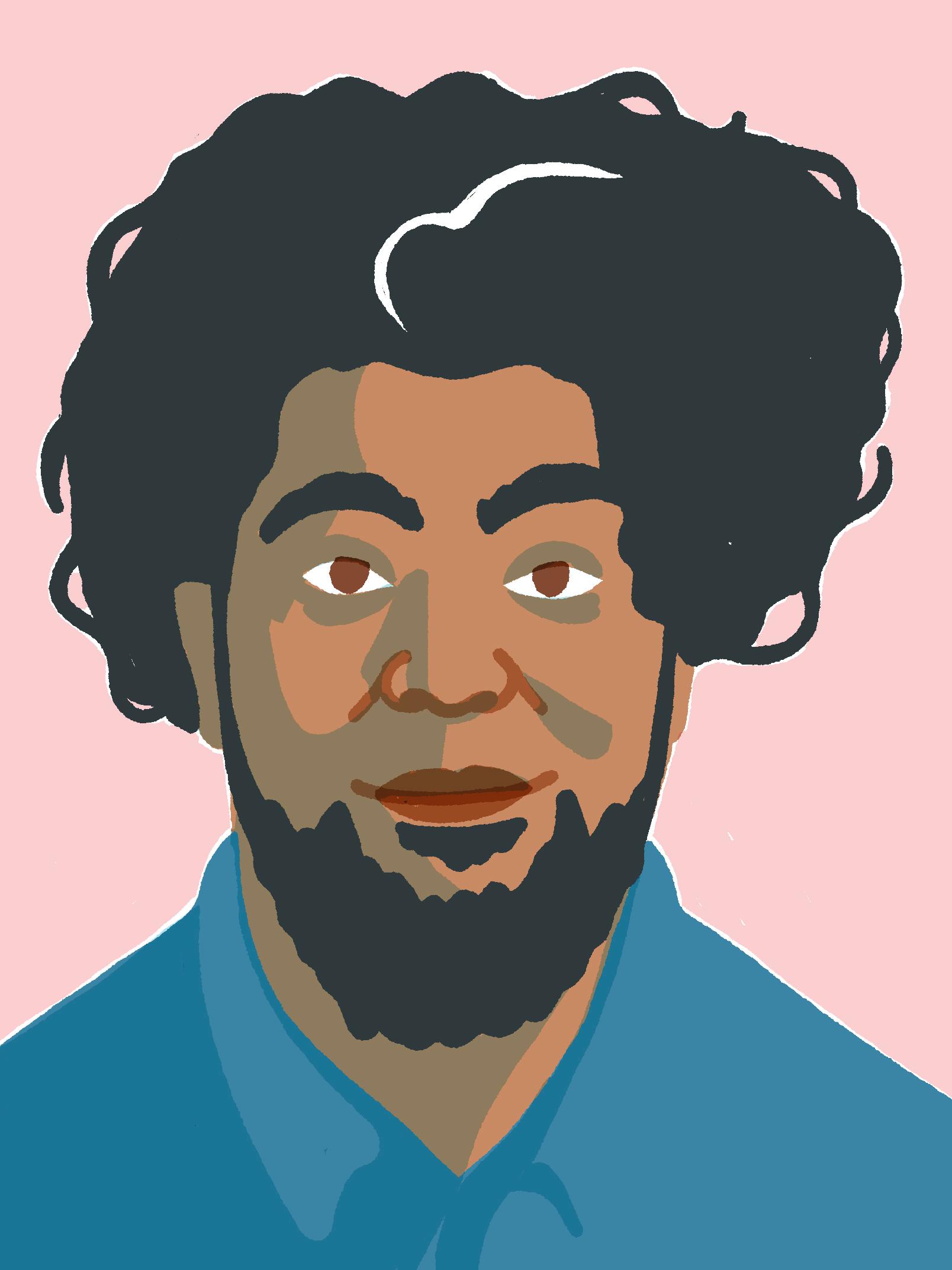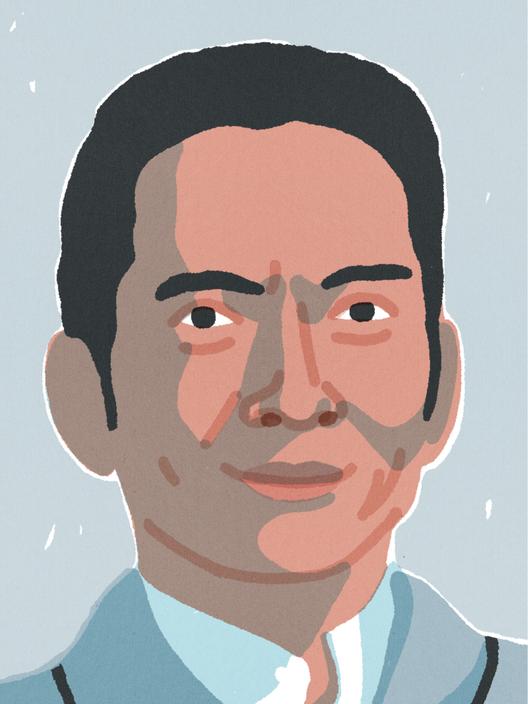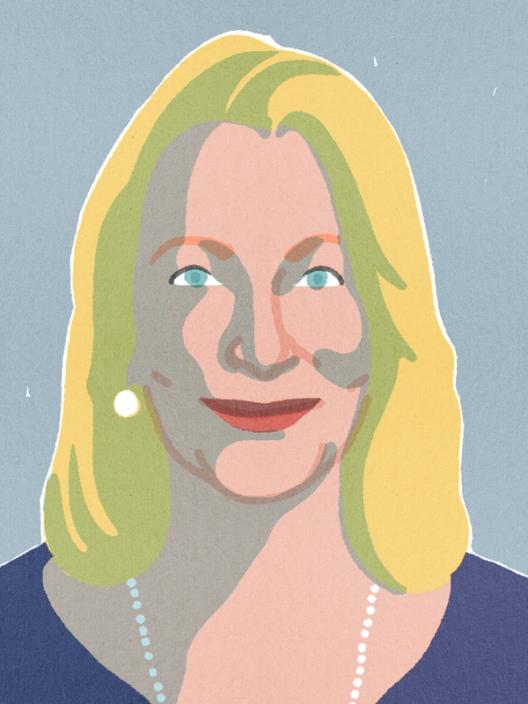Dan Mall’s 10 principles for a worthy design career


With over two decades of experience spanning design, teaching, entrepreneurship, and authorship, Dan Mall has navigated diverse roles across the design landscape. He distills his experience into 10 pieces of advice for tackling complex tasks, preventing burnout, and fostering continuous learning.
Hero illustration by Lorenzo Gritti.
In the world of design systems, Dan Mall has built a name for himself not just as a designer, but also as an entrepreneur, teacher, and author. He’s the brains behind his own design agency, a handful of startups, the education of thousands of students, and three insightful books. Now, with Design System University, he’s paving the way for enterprise teams to master design at scale. Here, he shares 10 rules that have been integral to his professional trajectory and personal growth. They offer a perspective into his approach, serving as a roadmap for anyone carving out their own path.
My two startups:
Over the past 25 years, I’ve dipped my toes into nearly every corner of the design world. Since the first time I sat down with a cracked copy of Photoshop to design my church a webpage in 1998 for $25, I haven’t looked back. I’ve worked for agencies, started and run my own, co-founded startups, ran an apprenticeship program, taught thousands of students, and even managed to pen three books along the way. Each role, each project, has been a stepping stone, presenting its unique challenges and rewards, and has shaped me as a designer and an individual.
My three books:
- “Pricing Design”
- “Design System in 90 Days”
- “Design That Scales” (Coming November 2023)
I daresay I’ve attempted more than the average bear has in a quarter-century career. Through it all, I’ve maintained an unyielding commitment to continuous learning. Not just about keeping up with the latest design trends or mastering new technologies, but about growing as a designer, pushing the boundaries of possibilities, and finding inventive ways to solve problems. These are some principles that have stuck with me and my own stories about starting, continuing, and stopping various endeavors.
Rule #1: Identify worthy goals
Once I’ve decided that a bet is worthy, I ask myself these questions: What end do I see here? Does that end leave me in a better place than I’m at right now?
If the answer is yes, I proceed.
Every endeavor begins with setting a goal. When my wife was pregnant with our first daughter, we brainstormed ways to maximize our family time. I was working at my dream job, but I was also away from home for 12 or more hours each day. This led to the creation of my own agency—something we had considered before but never planned out seriously.
Michael Bungay Stanier, in his book “How to Begin,” suggests three criteria for a worthy goal: It should be thrilling, important, and daunting. I've found that leaning heavily on the “thrilling” criterion works for me. If I don’t feel excited about an idea, I usually don’t pursue it. Starting my own agency was a thrilling, important, and daunting venture that proved to be a worthy bet.
Rule #2: Place bets on unfair advantages
In her book “Thinking in Bets,” Annie Duke reframes a way to think about decisions:
“Our decisions are always bets. We routinely decide among alternatives, put resources at risk, assess the likelihood of different outcomes, and consider what it is that we value. Every decision commits us to some course of action that, by definition, eliminates acting on other alternatives. Not playing a bet on something is, itself, a bet…There is always an opportunity cost in choosing one path over others.”
Job and relocation decisions are bets. Sales negotiations and contracts are bets. Buying a house is a bet. Ordering the chicken instead of the steak is a bet. Everything is a bet.
Every decision is a bet. To increase your odds of winning, place bets where you have an unfair advantage. Whether it’s your expertise, network, resources, or a unique insight, leveraging these advantages can make all the difference. When starting my agency, I had years of agency experience, a good reputation, and an existing steady stream of clients—all unfair advantages that increased my odds of success.
In their book “The Unfair Advantage,” Ash Ali and Hasan Kubba share their MILES framework that I revisit often: Money, Intelligence & Insight, Location & Luck, Education & Expertise, and Status.
With my latest venture, Design System University, I again have an unfair advantage. I ran an agency that specialized in helping people design at scale for a decade, so I already have a reputation as an expert. I know the patterns and the problems intimately. While none of those factors is a guarantee of success, they do increase the odds of it being a more worthy bet.
Rule #3: Begin with the end in mind
Dan Mall speaking at An Event Apart Orlando 2018.
In educator Stephen Covey’s acclaimed book “The 7 Habits of Highly Effective People,” the second habit is to “begin with the end in mind.”
Having a clear, achievable goal in mind is crucial. When I began speaking at conferences, I set my goal on eventually speaking at An Event Apart, a web design conference for UX and front-end experts. It was run by Jeffrey Zeldman and Eric Meyer. Their speakers were people whose blogs I read every day to hone my own craft, and I wanted to be regarded in the same light as them.
With this worthy bet in mind, I undertook various initiatives: I blogged, designed websites, and even volunteered at the event. Eventually, I achieved my goal. I was invited back to speak there 12 more times before the series closed. Along the way, I developed speaking skills that got me invited to over 100 other conferences, too.
Rule #4: Know when to stop
Advice from ultramarathoner Dick Collins:
“Decide before the race the conditions that will cause you to stop and drop out. You don’t want to be out there saying, ‘Well gee, my leg hurts, I’m a little dehydrated, I’m sleepy, I’m tired, and it’s cold and windy.’ And talk yourself into quitting. If you are making a decision based on how you feel at that moment, you will probably make the wrong decision.”
There are different types of stopping: finishing, quitting, and giving up. I give myself permission to do any of these at any time. Finishing means reaching the end I had in mind when I started. That might take the form of a traditional goal, like reaching a certain amount of money or followers, a time limit expiration, such as 30 days, or a supply drying up, like trying out a new protein shake until I run out of samples. Before I start, I generally try to decide when I’ll stop.
In contrast, I happily quit when I’ve identified a more worthy bet. Giving up is something different entirely. In the words of former Grubhub CEO Mike Evans’ “Hangry: A Startup Journey”: “[Quitting is] abandoning a thing in favor of something better. Giving up is just frustration and apathy.” I try not to give up when I’m frustrated, because frustration is often fleeting. Not every endeavor will reach its intended end, and that’s okay. The key is knowing when to persevere and when to pivot. Sometimes, the bravest way to persevere is to quit a task in favor of something better.
Rule #5: Stretch and warm up
As an adult who still attempts to play sports, allow me to extol the virtues of stretching and warming up before you play. I wouldn’t dare step on a basketball court without foam-rolling my calves, alternating between various yoga stances, and form shooting around before playing in a competitive game. Yes, I am that guy. If I don’t do these things, I’m all but guaranteed to hurt myself.
When I observe a designer go directly from a meeting to Figma to design a screen for a website or an app, I morph into a design dad. I shout, “My friend! Stretch first! You’re gonna hurt yourself!”
When I observe a designer go directly from a meeting to Figma to design a screen for a website or an app, I morph into a design dad. I shout, “My friend! Stretch first! You’re gonna hurt yourself!”
Journalist Sebastian Junger reframed the idea of being blocked: “It’s not that I’m blocked. It’s that I don’t have enough research to write with power and knowledge about that topic.”
Those who don’t take time to stretch and warm up often find themselves staring at a metaphorical (or literal) blank page. They blame writer’s block or creative block or the lack of a muse. It’s like warming up before a basketball game—it prepares your mind and gears you up for the task ahead.
Physics works against us here. Isaac Newton’s First Law of Motion—the law of inertia—states that “an object at rest stays at rest and an object in motion stays in motion… unless acted upon by an unbalanced force.” Before I start, I’m the object at rest. It’s easiest for me to keep doing nothing than to start something. This isn’t because I’m some slacker. It’s because science wills it so. (At least that’s what I keep telling myself.)
Before diving into a project, take time to prepare. Gather raw materials, brainstorm, or trace others’ work. When warming up, I use the same actions as designing something of my own—changing opacities, zooming in and out, assembling elements, copy and pasting, moving things around—except that I can move faster because I’m not creating something new. I’m priming my brain and my muscle memory for when I do these same actions on the slightly more difficult assignment of designing something of my own.
Rule #6: Embrace the mundane
This period of effort is what Seth Godin calls “The Dip”: “Almost everything in life worth doing is controlled by the Dip. At the beginning… it’s fun… the rapid learning you experience keeps you going. And then the Dip happens. The Dip is the long slog between starting and mastery.”
One of the biggest hurdles to working is how boring it is, but there’s a lot of value in doing manual and mundane work. It’s rote, but embracing the mundane is more than just getting work done; it’s about being the solution rather than finding one.
Almost every time I begin a project, I warm up by gathering references. I paste and organize screenshots of websites, identities, campaigns, and any other visuals I want this work to resemble. Manually assembling screenshots of long webpages is one of my favorite steps of this process.

This is true once you get into the work, as well. Even when the task seems trivial, it can serve as an antidote to burnout, as it addresses emotional exhaustion and a sense of futility. The willingness to engage in these tasks stems from caring about the end result and the people who will experience it.
Rule #7: Keep moving
Again, Isaac Newton’s First Law of Motion: “an object at rest stays at rest and an object in motion stays in motion… unless acted upon by an unbalanced force.”
The work, no matter how worthy, is often a slog. The “before” stage is exciting, full of potential. The “after” gives me resolution, closure, the feeling of a happily ever after. What happens between those moments SUUUUCKS. It’s just me, zoomed into my canvas at 3200%, tweaking a bezier curve on that icon oh-so-slightly. Watching Rocky Balboa lift weights is only exciting as a two-minute montage. It’d be agonizing to watch for an hour.
In his book “Drive,” Daniel Pink shares the three factors that generally motivate a person:
- Autonomy: the desire to direct our own lives.
- Mastery: the urge to make progress and get better at something that matters.
- Purpose: the yearning to do what we do in the service of something larger than ourselves.
Without at least some as well as the right amount of all three, I won’t have enough motivation to counteract the force of life coming at me. And without enough motivation, the “quitting” and “giving up” options start to look more enticing.
Because of the pre-work I’ve done before starting—back to physics—I’m already moving by the time I “start” working, and objects in motion tend to stay in motion. The bad news is that my work will almost always be acted upon by an unbalanced force. It’s called life. Counteract this force by building momentum. Start all pieces of work a bit earlier, even if they cannot be finished right away. Share work-in-progress early and often. Like friction can slow a rolling ball to a halt, life constantly throws many things at me to slow me down. The important thing is to keep moving.
Rule #8: Keep asking why
Whenever I’m launching a new course or book, I usually have to sit down and send a sales message to my email list. It makes me feel gross. I’m proud of the work, and excited to share it—but sending sales emails is one of my least favorite aspects of the process. That feeling is important.
Understanding why you undertake certain projects or tasks is just as important as knowing how. Whether it’s because you have to or because you want to, find the purpose in your work. One of the most important lessons I’ve learned over my career is that I can find a worthy bet anywhere. It might not be obvious and I might have to dig for it, but it’s there. What makes sending sales emails more worthy is in the approach—holding myself to a standard of doing it in a way that authentically connects me to the people I can help.
Rule #9: Grieve the end
After ten years, nine months, and six days of running my agency Superfriendly, I shut it down. Finishing a project often triggers a sense of loss. When I pursue a worthy bet, I’m working toward an outcome for a set amount of time. And then, one day, I’m not. Even when I finish instead of quitting or giving up—especially when I do in a way that feels positive and successful—the activities that were there for me every day no longer are. It’s important to acknowledge these feelings and grieve the end. Then, armed with the lessons and experiences you’ve gathered, you can move on to the next exciting endeavor.
Rule #10: Always be ready for the next worthy bet
With every end comes the opportunity for a new beginning. Be ready for your next worthy bet. The skills, experiences, and insights you’ve gathered along your journey will serve you well in your next endeavor. Whether it’s starting a new agency, launching a course, or writing a book, be open to the possibilities.
A few years back, I came across a piece of advice that made me rethink how I approach my life and work. The idea was to view each day as a chapter in a story. If a day ends on a sour note, it doesn’t mean the story is ruined. Instead, it’s merely a plot twist. You can always add a fresh chapter the next day, changing the course of the narrative. You can add new chapters to your story anytime, making it richer and more nuanced. The story never ends; it just evolves. So, always be ready to write the next chapter. That’s a worthy bet.

Dan Mall is a husband, dad, teacher, creative director, designer, founder, and entrepreneur from Philly. He runs Design System University, where he creates, collects, and curates curriculum, content, and community to help enterprise teams design at scale. Previously, Dan ran design system consultancy SuperFriendly for over a decade. Dan writes about design systems, process, and leadership and other issues on his site and in his weekly newsletter.
Related articles




